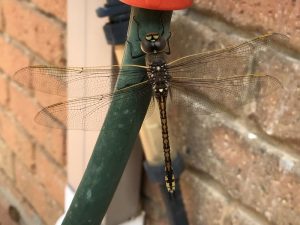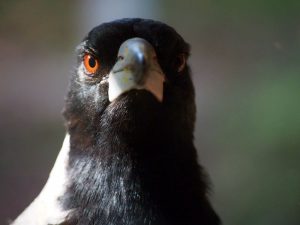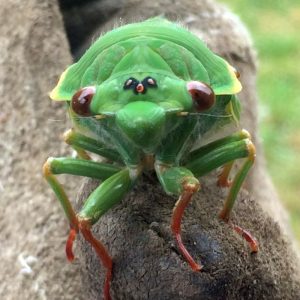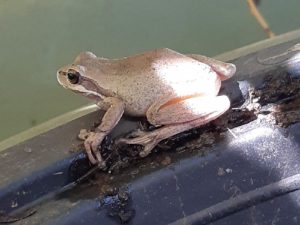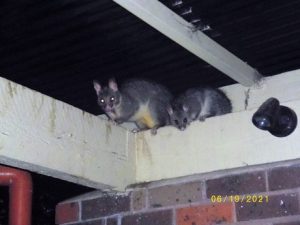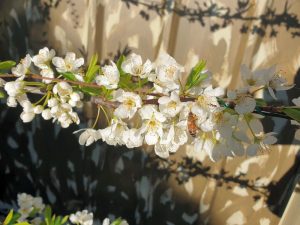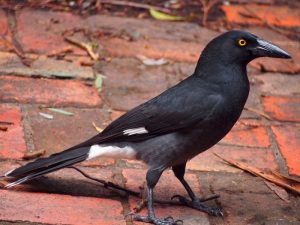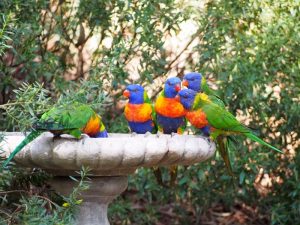Thanks to all the people who have contributed to this week’s newsletter: Amanda Coombes, Amy Thomas, Choon Yin Yeok, Chris Kent, Gabrielle Callahan, Gina Wilson, Jaimie Sweetman, James Petty, Kaye Saunders, Kerri Wellington, Lynn Wallace, Marcela Santos, Pam Jenkins, Pauline Taylor, Shiva Vasi, Sigrid McCarthy, Simone Boyd and Stuart Rodda.
I have decided to stop publicising any more face-to-face events until the current lockdown is ended. This is not an easy decision for me as promoting events is at the core of this newsletter but I don’t see any point in advertising events that are probably then going to be cancelled. I am, however, more than happy to promote any ‘local’ online events. If you know of an upcoming online event that you would like to see included in this newsletter, email me with either the details or a link to the details.
Obviously, not having any events listed means that there will be space to include other things. Now would therefore be a really good time for you to submit some words about any food-related matters. It can be anything so long as it is food-related: ask a question, provide a tip, discuss an issue, submit a photo, etc. Email us with your contribution(s).
This week’s farmers’ markets
Saturday: Coburg and Collingwood Children’s Farm.
Sunday: Alphington, Eltham and Whitehorse (not confirmed).
Jaimie’s edible plant of the month – rock samphire (Crithmum maritimum)
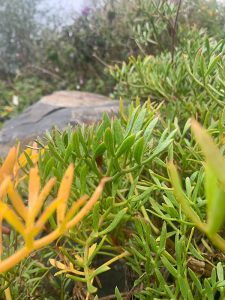 Rock samphire is a favourite of mine and really easy to grow.
Rock samphire is a favourite of mine and really easy to grow.
Another name is sea fennel because its leaves look a bit like coral and its flowers are similar to fennel, belonging to the same family Apiaceae.
Originating from the coast lines of the Black sea and Atlantic, it grows well in coastal conditions although it will also do just fine in any garden that has good drainage. It does not handle having wet feet at all!
Extremely drought tolerant and enjoying full sun to part shade, it’s a good choice for most Melbourne gardens.
The young leaves are harvested and eaten raw in salads, etc. It also works really well pickled to preserve for later or added to other vegetable pickles for flavour. It’s a bit hit and miss with taste as it tastes healthy! A bit like parsley and carrot combined.
It’s high in Vitamin C and was actually sometimes used to prevent scurvy on long boat trips.
Apparently it grows from seed well although, so far, I haven’t had much success. Rather, we grow ours from dividing the new runners once they have roots. These are available in our nursery on and off.
I have never quite understood why it’s not more readily available in nurseries but perhaps we will see it more often due to its more recent appearances in MasterChef. Fingers crossed!
In summary, a striking little plant for the garden, full of antioxidants and providing nutrients all year around.
* * * * *
Watch Jaimie’s video about rock samphire.
Read Jaimie’s previous edible plants of the month.
Jaimie Sweetman is Head Gardener of the Edible Forest located on the Yarra Valley Estate in Dixons Creek. Tours of the Edible Forest, often led by Jaimie, take place on all days except Sundays – read more and book your place on a future tour.
Hand saws (by Stuart Rodda)
[This article on mini chainsaws is one of a series of articles on hand-operated cutting tools.]
The multiple cutting teeth of saws make short work of all kinds of woody plants which are too large or too tough for secateurs or loppers. Different types include straight saws, curved saws including those with backward cutting teeth, and bow saws.

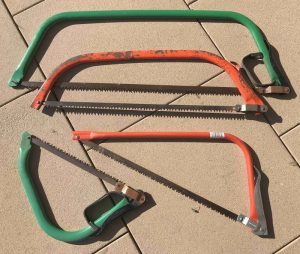 Bow saws (see left hand photo) usually have a thinner, longer blade because the ‘bow’ provides the rigidity needed to prevent bending of the blade, and they cut efficiently on both the pulling and pushing stroke. In my experience, the Jack’ brand is high quality and long lasting but there are other premium brands such as Fiskars and Stanley.
Bow saws (see left hand photo) usually have a thinner, longer blade because the ‘bow’ provides the rigidity needed to prevent bending of the blade, and they cut efficiently on both the pulling and pushing stroke. In my experience, the Jack’ brand is high quality and long lasting but there are other premium brands such as Fiskars and Stanley.
Chainsaws are a labour saving enhancement and, despite their dangers, can be useful even in a small backyard. The availability of mains-powered electric chainsaws, and the development of powerful lithium batteries for use away from mains power, mean that you don’t have to be skilled with petrol motor-powered tools to have your own chainsaw(s).
As with any tool with sharp edges, saws must be treated with care and respect. Wearing gloves for hand protection is a must.
Always buy quality saws and you will not end up with a tool requiring constant sharpening or where the blade bends easily or rusts quickly. A blunt blade on a bow saw can be replaced easily whereas other saws may need total replacement or sharpening as they become blunt. Never allow the teeth of the saw to come in contact with anything harder than wood, such as metal (wire, nails) or stone (gravel or sand). Saws with backward cutting teeth allow you to cut by pulling the saw towards yourself, reducing the chance of the blade bending, or you slipping onto the saw teeth, or getting the saw jammed in the wood.
When cutting larger diameter wood, try to cut from the side which is under tension (e.g. the top of a branch) so that the cut tends to open up as you go, rather than closing and grabbing the saw blade. Undercut the branch a little before cutting through from the top, to prevent a ragged break in the branch or a strip of bark being pulled off the tree when the branch breaks.
A fine-toothed saw will always give you a cleaner cut and sometimes it may be best to cut off the bulk of a large branch with a coarse saw, then trim the cut stub with a finer saw. As with all pruning, cut close to the trunk so as not to leave a stub which will die and be a site for disease to enter the tree. Make sure your saw is clean and dry before storing it for the next time you will use it.
More on mini chainsaws
Last week, we included an article by Stuart on mini chainsaws. Since then, Stuart has written in to say: “although the supplier says lubrication is not necessary, I have now found that silicone spray on the chain makes the tool work better and will probably give you longer life (less wear).”
Another local food justice organisation – The Local Food Collective
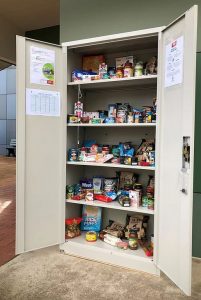 The Food Collective is an initiative of Diamond Valley Community Support, which is based in Greensborough. It brings together a number of local delivery and donation partners, community organisations and individuals to address food security challenges for vulnerable and disadvantaged community members in the Diamond Valley Region. They do this by sourcing and supplying basic non-perishable food parcels of everyday necessities to those who are experiencing financial crisis and needing emergency relief assistance.
The Food Collective is an initiative of Diamond Valley Community Support, which is based in Greensborough. It brings together a number of local delivery and donation partners, community organisations and individuals to address food security challenges for vulnerable and disadvantaged community members in the Diamond Valley Region. They do this by sourcing and supplying basic non-perishable food parcels of everyday necessities to those who are experiencing financial crisis and needing emergency relief assistance.
One of its main initiatives to date has been the establishment of community pantries around Banyule and Nillumbik. These pantries contain non-perishable food which is accessible 24 hours a day, seven days a week, require no appointments and are open to whoever needs food. Their philosophy is give what you can, take what you need, with people able to donate to the pantry as well.
Their 24/7 pantries are in:
- Greensborough (Greenhills Neighbourhood House).
- Hurstbridge (Hurstbridge Community Hub).
- Panton Hill (Panton Hill Living & Learning Centre).
- Rosanna (Rosanna Fire Station Neighbourhood House).
- Strathewen (Strathewen Primary School).
Welcome Kerri, Marcela and colleagues!
That makes a total of 9 24/7 community pantries around North East Melbourne that I am aware of and here is a map which includes all 9 pantries plus other ‘food is free’ places. If you know of any other community pantries, please email me.
What to do with your large mesh netting?
As discussed last week, it is no longer legal to use large mesh netting (greater than 5mm x 5mm at full stretch) to protect your fruit trees (read more). Lynn Wallace has a lot of this netting and asks “has anyone got any ideas on how to re-use, recycle or ethically dispose of it?”
This subject was actually discussed earlier in the year (in our 3rd February newsletter), where Lucinda Flynn asked her council (Nillumbik) and got this reply: “Unfortunately we have not been able to source any options for recycling plastic netting material.” The Council, in turn, contacted REDcycle and got this reply: “Whilst the material itself may be able to be REDcycled (only if it is polypropylene PP, LDPE or HDPE, not if it is actually nylon), the problem with this is that they have had long exposure to the sun, meaning the plastic has already started to deteriorate (and some are often quite dirty as well). Any materials in this state cannot then be used, as it impacts the structural integrity of the final products made from the plastics. Further, unfortunately we are not actually able to accept commercial/industrial or large volume soft plastics like this. Even if the bird netting is clean, it would all need to be cut to A3 size pieces or smaller before we could accept it, otherwise it becomes entangled in the processing machinery.”
Can anyone confirm whether or not this is still the case? Email me.
Yet more on disposing of kitty litter
Following on from the discussions in the last few newsletters, James Petty has written in: “Gene Logsdon’s book Holy shit: managing manure to save mankind covers what to do with all types of manure including pet manure and even human poop.”
Yes you did know (sort of)! Deterring cockatoos
Last week, Yvonne Iliffe asked how she could deter corellas and sulphur-crested cockatoos from wrecking her plants. A number of you have replied.
Pam Jenkins: “After the cockies nipped off my leeks, I stuck some short pieces of bamboo around the edge of my garlic patch and wound string around the patch and in between the plants in a random pattern and height, from trip-them-up height to neck height. The garlic has remained unscathed thus far. My parents used to do this with black cotton to deter the blackbirds from digging up their seeds. The string is tight so the cockies are unlikely to get tangled in it.”
Simone Boyd: “I have used the reflective tape which can be purchased at most hardware stores to keep cockies at bay. I strung up lengths of string across parts of my small scale market garden and put the tape like ribbons along it at random intervals. This was effective for two seasons, until the cockies cottoned on to the fact that it was not dangerous. Still, worth a try. Although you can buy flimsy reflective tape in the garden section, it will tear and become an environmental hazard pretty quickly. Instead, buy the thicker tape in rolls from the building section which has an adhesive backing and stick it back to back around the string, giving you a double sided reflective area.”
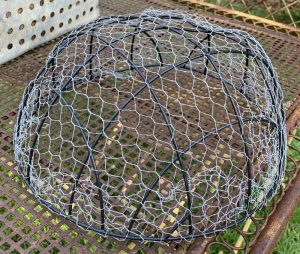
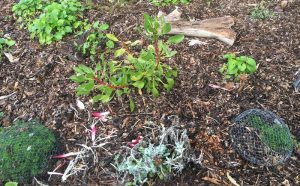 Sigrid McCarthy: “I don’t have a solution for Yvonne, but just wanted to send my solidarity. Cockies are such cheeky things. They’ve recently discovered my mum’s protea (see photo near right). Almost everything needs to be in cages these days, which doesn’t exactly make for a charming garden!”
Sigrid McCarthy: “I don’t have a solution for Yvonne, but just wanted to send my solidarity. Cockies are such cheeky things. They’ve recently discovered my mum’s protea (see photo near right). Almost everything needs to be in cages these days, which doesn’t exactly make for a charming garden!”
In Sigrid’s photo, you might notice the chicken wire guards around the daisies to either side of the protea. I asked Sigrid whether these were homemade and she replied: “Yes they are DIY – hanging flower baskets wrapped in chicken wire. There are a few sizes available. We then peg them down to avoid rabbits/birds/wombats/kangaroos flipping them over (see photo far right).”
Want to buy some chemical-free seeds?
When someone sends me something to put into this newsletter, it sometimes leads us to talking about something else as well. Such is the case with Simone Boyd after she sent in her comment about deterring cockatoos above. It turns out that she has a market garden and also sells seeds online. I invited her to write something about her website for the newsletter and she has done so.
“Heirloom Naturally is a small scale market garden in Mansfield growing heirloom vegetables, in the field and without chemicals. Following a shortage of bulk heirloom seeds during the height of the Covid pandemic, we began saving more of our own precious seeds and now offer any excess for home growers to sow. Proven performers in cool climates. For more information, head to our online shop (www.heirloomnaturallymansfield.com/shop).”
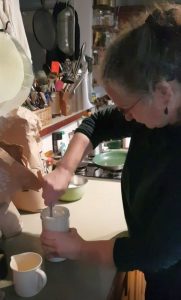 More on making simple sourdough
More on making simple sourdough
You may remember that a few weeks ago we discussed Lucinda Flynn’s method for making simple sourdough. Lucinda has now produced a video to accompany her article.
Do you know?
Shiva Vasi has written in: “Aphids have been having a feast on the tender leaves of my roses. Does anyone know of a homemade aphid spray which is suitable for roses?” Email your replies.
Live in Eltham and want some veggie seedlings?
Lynn-eva Bottomley, from Organic Fix, has written in to say that they are currently selling Diggers heirloom veggies and herbs, with the current list including basil, capsicum, chilli, coriander, cucumber, eggplant, oregano, mint, spinach, thyme and tomatoes (various).
Guy’s tip of the week – armenian cucumbers
During lockdown, I’m going to try and provide a veggie growing tip each week. Most will hopefully be brand new but some will inevitably be recycled from newsletters of previous years.
In passing, a friend of mine who used to maintain a rather well known sustainability website used the byline ‘100% recycled‘ to summarise the content on the website. As an obvious sustainability principle, this went down well with the readership but they were unaware that it was actually a private joke because what my friend meant was that there was no new content on the website(!), just old articles continually being re-dated. When, amongst his giggling, he told me this, I checked and it was indeed true: hidden behind all the re-dating, the website actually had very little new content!
Anyway, my tip this week is: consider growing armenian cucumbers this summer. Armenian cucumbers (aka snake melons) are a type of rockmelon but they both look and taste like a type of cucumber. If you are bored with growing the same old Lebanese cucumbers each year, try Armenian cucumbers this year: they are extremely prolific and, to my palette, a bit tastier than cucumbers. And you don’t need to peel them.
As someone called Fredric Hasselquist apparently said in the 18th Century, they are “the queen of cucumbers, refreshing, sweet, solid, and wholesome.” Or, as someone called George Post said at the turn of the 19th Century, “it is longer and more slender than the common cucumber, being often more than a foot long, and sometimes less than an inch thick, and pointed at both ends.”
The photo competition
The results of last week’s competition
The theme was ‘critters’ and we had 10 entries.
The winner, as judged by our panel, was Choon Yin Yeok’s photo of a dragonfly.
Commendations for Nada Cunningham’s photo of an Australian magpie, Chris Kent’s photo of a cicada and Amy Thomas’s photo of a yellow-tailed black cockatoo.

This week’s competition
As we are still in lockdown, we are going to have another photo competition. The theme this week is ‘native flowers’.
To get you started, the photo right is of a young blechnum banksia Banksia blechnifolia that is currently in flower in my garden.
Email your photos, including the Latin name of the plant and, if appropriate, some words about the photo.
Chilli pancakes with caramelised onion and chunky guacamole (by Pauline Taylor)
Adapted from Jamie Oliver’s 15 minute recipes. Serves: 4.
 In addition to the recipe itself, Pauline has also produced a 20 minute video where she demonstrates it.
In addition to the recipe itself, Pauline has also produced a 20 minute video where she demonstrates it.
Ingredients
Pancakes
1 cup self-raising flour
1 large egg
1 cup milk
1 fresh red chilli
40g cheddar cheese
⅓ cup corn kernels
Olive oil
Toppings
4 ripe tomatoes
1 ripe avocado
1 lime
½ bunch fresh coriander
8 rashers bacon
maple syrup
4 tablespoons fat-free natural yoghurt
Caramelised onion
2 large red onions
1 tablespoon brown sugar
1 tablespoon balsamic vinegar
a splash of olive oil
Method
Whisk the flour, egg and milk in a bowl with a pinch of salt until smooth. Finely slice the chilli, grate the cheese and then fold both into the batter with the sweetcorn. Set aside.
Slice the onions, place in a heated pan with olive oil and fry until almost clear. Add the sugar and vinegar, cook until browned and jam-like. Set aside for plating up.
Roughly chop the tomatoes and the peeled, de-stoned avocado. Toss with the juice from half a lime, the top leafy half of the coriander and salt and pepper.
Put the bacon into a medium frying pan on medium-low heat, turning when crisp and golden. Drizzle with maple syrup, glaze for 20 seconds, then remove from heat. Add a ladleful of batter and spread it out to the edges. Flip when golden and remove to a plate once done.
Place a quarter of the bacon, caramelised onion and guacamole on top of the pancake and serve with a dollop of yoghurt, a wedge of lime, and chilli sauce if you like that extra hit. Repeat with the remaining ingredients and serve as and when they are ready.
If you have any recipes that you would like to share with the other newsletter readers, email it to me.
Which link was clicked most times in the last newsletter?
The most popular link last week was Darebin Council’s free, downloadable seed saving guide (pdf).
Joke (or pun) of the week
I bought a little bag of air today. The company that made it was kind enough to put some potato chips in it as well.
Upcoming online events
As I said at the start of this newsletter, I am not going to advertise any future face-to-face events during the current lockdown but I am (more than) happy to advertise any ‘local’ online events if people tell me about them. If you know of an upcoming online event that you would like to see included in this newsletter, email me with either the details or a link to the details.
Here are three upcoming online events that I have been notified about.
Cooking, conversation and community fundraiser; Sunday, 12th September, 4-5pm
This will comprise a cooking demonstration of a local Afghan dish plus a conversation about the current situation in Afghanistan featuring Dr. Nouria Salehi, Homaira Mershedi and Dr. Paula Hanasz. Pay as you wish to participate, starting from $15. Hosted by Collingwood CWA, in partnership with the Afghan Gallery Restaurant, to support and raise money for the Afghan Australian Development Organisation. Read more and potentially book your place.
Good food, good mood with Joel Feren; Tuesday, 14th September, 7.30-8.30pm; free
This presentation will aim to demonstrate the relationship between good nutrition and good mental well-being, highlighting the fact that consuming a nutritious and balanced diet does not have to be time consuming or difficult. The night will include a presentation from Joel with question and answer time from the audience. Jointly organised by various councils. Read more and potentially book your place.
Seed saving; Wednesday, 15th September, 7-8pm; free
Learn how to save your own seeds, how to extract seeds from the plant, and how to store and save seeds for planting. Organised by Whittlesea Community Garden in partnership with the Whittlesea Landcare group and Whittlesea Library. Book through Whittlesea Library by phone (9716 3028).

